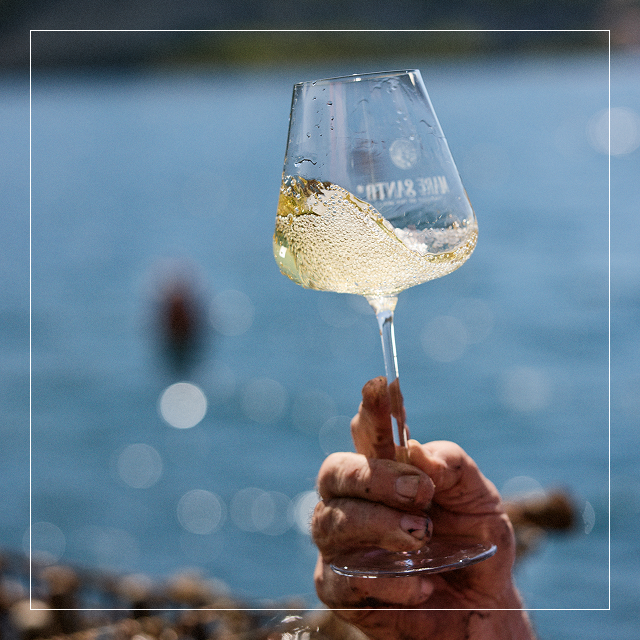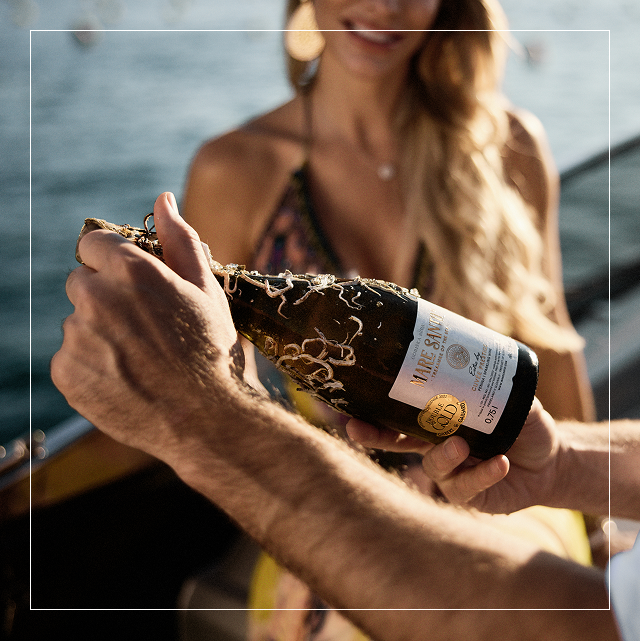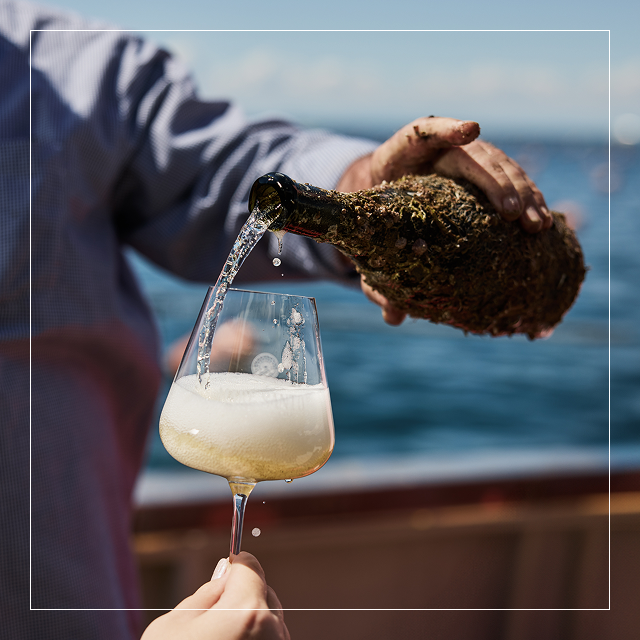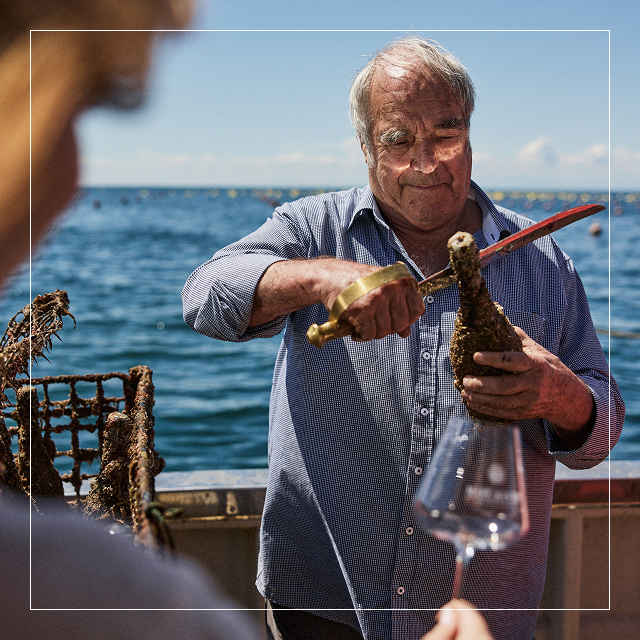How to Serve Mare Santo
A sommelier’s ritual, explained for anyone who wants to do it right.
Temperature
Temperature
Ideal serving temperature: 5 to 7°C (41 to 45°F).
To chill it right:
Place it in a bucket with equal parts ice and water
Let it rest for about 20 minutes
Avoid the freezer — it shocks the wine and dulls the taste
When colder, you notice freshness.
A little warmer, you may notice sea breeze, wet stone, or wild herbs coming through the sparkling wine.


Choose the Right Glass
Use a tulip-shaped glass — wide in the bowl, narrower at the top.
This shape lifts the aromas and keeps the bubbles steady.
If you don’t have one, a white wine glass works.
Avoid flutes and coupes: one traps the scent, the other loses it fast.
The aim is to let Mare Santo open slowly, like something waking up.
The bottle
Open It with Control
No noise. No sudden moves.
How I open every bottle of Mare Santo:
Remove the foil and loosen the cage — but keep it on
Hold the cork with one hand and the bottle base with the other
Twist the bottle, not the cork, while keeping pressure on the top
Let the cork release with a soft sigh
It’s about respecting the pressure the sea helped shape in this sparkling wine.

One Final Gesture
Before sipping, hold the glass near your ear.
If you hear a soft fizz, Mare Santo is alive.
A small detail, but it tells you something real.
– A. Serra, Sommelier

Pour Like a Professional
Don’t pour all at once. Go in three steps:
Tilt the glass at 45°
Pour halfway and pause
Finish slowly
This reduces foam, keeps bubbles fine, and lets the wine settle into its shape.
Think of it as introducing the wine to the glass, not dropping it in.
One Final Gesture
Before sipping, hold the glass near your ear.
If you hear a soft fizz, Mare Santo is alive.
A small detail, but it tells you something real.
– A. Serra, Sommelier














